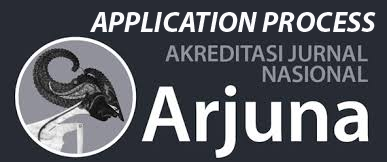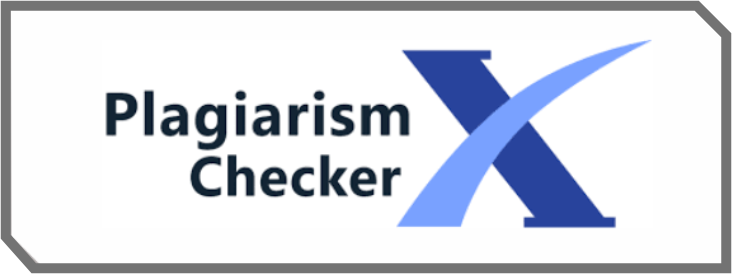Efektivitas Gallic Acid Sebagai Agen Antibakterial: Tinjauan Literatur
DOI:
https://doi.org/10.59841/jumkes.v3i2.2571Keywords:
Gallic Acid, Antibacterial Agents, Antibacterial Activity, Antibacterial MechanismAbstract
Gallic Acid (GA) is a polyphenolic compound widely found in plants and has shown potential as a natural antibacterial agent. This literature review aims to assess the effectiveness of gallic acid as an antibacterial based on available experimental studies. The reviewed articles include studies published between 2015 and 2025 that specifically investigated the antibacterial activity of gallic acid against pathogenic bacteria. Various studies have demonstrated that GA, either in its pure form or in combination with other materials such as hydrogels, gold nanoparticles (AuNP-GA), graphene oxide (GO-GA), and natural extracts, exhibits significant antibacterial activity against a wide range of bacteria, including Staphylococcus aureus, Escherichia coli, and other pathogenic bacteria. GA-based formulations also show additional benefits, such as promoting wound healing, supporting osteogenesis, and even exerting cytotoxic effects on certain cancer cells. Nevertheless, further research is needed to optimize the clinical application of gallic acid by considering both its safety and efficacy.
References
Badhani, B., Sharma, N., & Kakkar, R. (2015). Gallic acid: a versatile antioxidant with promising therapeutic and industrial applications. RSC Advances, 5(35), 27540-27557.
Barceló, J. M., Guieb, M., Ventura, A., Nacino, A., Pinasen, H., Viernes, L., Yodong, T., Estrada, B. L., Valdez, D., & Binwag, T. (2014). Antibacterial, Prooxidative and Genotoxic Activities of Gallic Acid and its Copper and Iron Complexes against Escherichia coli. Asia Pacific Journal of Multidisciplinary Research, 2(6), 44–56.
Choubey, S., Varughese, L. R., Kumar, V., & Beniwal, V. (2015). Medicinal importance of gallic acid and its ester derivatives: a patent review. Pharmaceutical Patent Analyst, 4(4), 305-315.
Chung, K. T., Wong, T. Y., Wei, C. I., Huang, Y. W., & Lin, Y. (1993). Tannins and human health: a review. Critical Reviews in Food Science & Nutrition, 33(6), 371-390.
Flores-Maldonado O, Dávila-Aviña J, González GM, Becerril-García MA, Ríos-López AL. Antibacterial activity of gallic acid and methyl gallate against emerging non-fermenting bacilli. Folia Microbiol (Praha),70(1):127-135.
Gobin M, Proust R, Lack S, Duciel L, Des Courtils C, Pauthe E, Gand A, Seyer D. A Combination of the Natural Molecules Gallic Acid and Carvacrol Eradicates P. aeruginosa and S. aureus Mature Biofilms. Int J Mol Sci, 27;23(13):7118.
Karamac, M., Kosinska, A., & Pegg, R. B. (2010). Content of gallic acid in selected plant extracts and its contribution to the total antioxidant capacity measured by the ferric reducing antioxidant power (FRAP) assay. CyTA - Journal of Food, 8(3), 195-202.
Nohynek, L. J., et al. (2006). Berry phenolics: antimicrobial properties and mechanisms of action against severe human pathogens. Nutrition and Cancer, 54(1), 18-32.
Ou, M., et al. (2013). Antibacterial mechanisms of gallic acid and its derivatives. Biochemical Pharmacology, 85(2), 188-195.
Pang, Y., Guan, L., Zhu, Y., Niu, R., Zhu, S., & Lin, Q. (2023). Gallic acid-grafted chitosan antibacterial hydrogel incorporated with polydopamine-modified hydroxyapatite for enhancing bone healing. Front. Bioeng. Biotechnol, 11:1162202. doi: 10.3389/fbioe.2023.1162202
Rattanata, N., Klaynongsruang, S., Leelayuwat, C., Limpaiboon, T., Lulitanond, A., Boonsiri, P., Chio-Srichan, S., Soontaranon, S., Rugmai, S., & Daduang, J. (2016) Gallic acid conjugated with gold nanoparticles: antibacterial activity and mechanism of action on foodborne pathogens. International Journal of Nanomedicine, 3347-3356, https://doi.org/10.2147/IJN.S109795
Salih, T. A., Malik, S. N., Al-Gorany, S. M., Jameel, E. S. (2025). Olive (Olea Europaea) Leaf and Arugula (Eruca Sativa) Seed Extracts Have Antibacterial Properties. Matrix Science Pharma, 9(1): 01-03. http://doi.org/10.26480/msp.01.2025.01.03
Sánchez-Maldonado, A.F., Schieber, A. and Gänzle, M.G. (2011), Structure–function relationships of the antibacterial activity of phenolic acids and their metabolism by lactic acid bacteria. Journal of Applied Microbiology, 111: 1176-1184. https://doi.org/10.1111/j.1365-2672.2011.05141.x
Sardella, R., et al. (2021). Nanotechnology-based strategies to enhance the antimicrobial activity of gallic acid. International Journal of Nanomedicine, 16, 3555-3570.
Shamsia, S., Eliasa, N., Sarchiob, S. N. E., Yasin, F. M. (2018). Gallic Acid Loaded Graphene Oxide Based Nanoformulation (GAGO) as Potential Anti-bacterial Agent against Staphylococcus aureus. Materials Today: Proceedings 5, S160–S165.
Tagousop CN, Tamokou JD, Kengne IC, Ngnokam D, Voutquenne-Nazabadioko L. Antimicrobial activities of saponins from Melanthera elliptica and their synergistic effects with antibiotics against pathogenic phenotypes. Chem Cent J. 2018 Sep 20;12(1):97.
WHO. (2020). Antibiotic resistance: a global threat. Retrieved from https://www.who.int/news-room/fact-sheets/detail/antibiotic-resistance
Xu, C., Gao, S., Yang, Y., Li, X., & Wang, S. (2018). Antibacterial activities and mechanism of gallic acid against Listeria monocytogenes. Food Science and Technology Research, 24(5), 905-910.
Yilmaz, B. S. (2024). Antimicrobial and Anticancer Activity of Gallic Acid–Cu(II) Hybrid Nanofowers and Gallic Acid–Zn(II) Hybrid Nanofowers. Journal of Inorganic and Organometallic Polymers and Materials, 34:5329–5341. https://doi.org/10.1007/s10904-024-03169-2
Zhou, Y., et al. (2020). Gallic acid inhibits biofilm formation and virulence factor expression in pathogenic bacteria. Microbial Pathogenesis, 143, 104135
Downloads
Published
How to Cite
Issue
Section
License
Copyright (c) 2025 Jurnal Mahasiswa Ilmu Kesehatan

This work is licensed under a Creative Commons Attribution-ShareAlike 4.0 International License.










